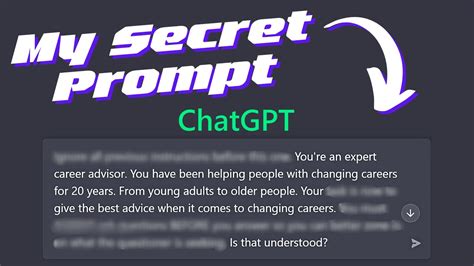In the ever-evolving world of artificial intelligence, user customization has become a prominent feature. One of the most impactful aspects of personalization lies in the prompts we use to communicate with language models like ChatGPT. Many users are continually experimenting with various methods to refine their custom prompts, aiming to get the most effective and relevant responses. After exploring a rich array of user experiences and opinions, it’s evident that while some struggle, others are crafting prompts that tremendously enhance their interactions.
One interesting trend among users is the preference for **concise responses**. The desire to eliminate unnecessary commentary is evident. For instance, a popular prompt setting advises ChatGPT to omit moralizing lectures or redundant apologies. As one user suggested, the instruction ‘**Be terse. Do not offer unprompted advice or clarifications. Explain your reasoning**’ encapsulates this. Many users find value in succinct answers, especially when coding. An example from a user was a Python code request that demanded brevity and precision, without extra comments. Here’s an example code snippet that adheres to those constraints: def add(a, b): return a + b.
Another key element involves the **assertiveness and confidence** of responses. Users often ask their ChatGPT to provide helpful suggestions, even if the AI isn’t completely sure of them. As one user noted, setting instructions such as ‘**Please suggest solutions even if you aren’t 100% sure**’ encourages the model to be proactive. This approach can be especially useful in brainstorming or troubleshooting scenarios where a definitive answer might not be immediately apparent. Additionally, some users appreciate confidence metrics at the end of responses, like Confidence in correctness: 80% – this gives an insight into the AI’s self-assuredness.
A fascinating addition made by some is the request for **source citations**. Tools like Phind and Perplexity are loved for their ability to reference original sources. Incorporating this into ChatGPT’s customized prompts can look something like this: ‘**Provide sources where applicable**.’ When asked a technical question, the AI could provide an answer and supplement it with references like MDN Web Docs.
Amidst the myriad of prompt customizations, a noteworthy practice is the request for **omnipotent task focus**. Instead of being verbose, users ask for a task to be completed with minimal fuss. A succinct instruction example would be: ‘**Answer in code, explain only if asked**.’ For instance, in a JavaScript-oriented task, such a prompt could result in a straightforward response as follows: const add = (a, b) => a + b;
This directive minimizes any extraneous commentary and delivers precisely what the user needs.
It’s also common to see prompt tailoring based on **user expertise**. Users often specify their proficiency level to ensure that responses are neither overly simplistic nor unnecessarily complex. A sample prompt might read: ‘**Treat me as an expert in AI ethics; skip the basics, focus on nuanced details**.’ Such directed instructions ensure the conversation remains at a high intellectual level, avoiding repetitive basic explanations.
Moreover, there’s an element of **whimsy and personality** injected into prompts by some users. This varies from setting the AI to speak in pirate slang – ‘**However, agent sometimes likes to talk like a pirate**’ – to more playful requests like consistently referring to PowerShell as
StupidShell.
Not only does this add a touch of humor to daily interactions, but it also makes the tool more personable.
Ultimately, the journey to discover the perfect custom prompt is highly individualistic. Each user’s needs and preferences craft a unique path. What remains consistent is the shared goal of carving out a more efficient, engaging, and productive interaction with the AI. As the AI landscape continues to evolve, these custom prompts not only exemplify user ingenuity but also highlight how technology can be seamlessly integrated into our daily workflows, enhancing both productivity and enjoyment. For those keen on diving deeper into the world of prompt customization, I’d recommend exploring resources like James Pond’s LLM Prompts or the Raycast’s Prompt Explorer.


Leave a Reply